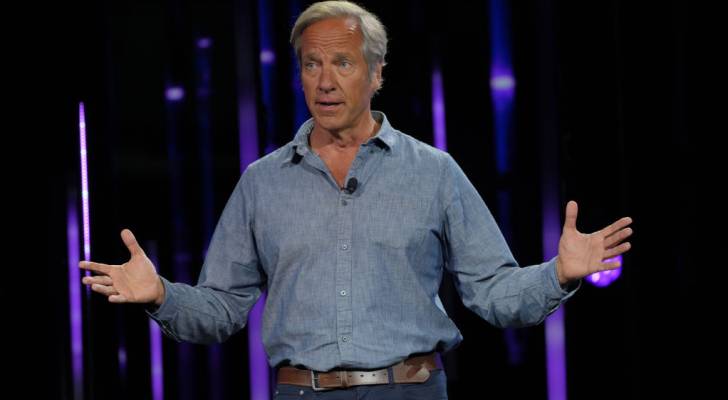Mike Rowe, host of Dirty Jobs and CEO of the nonprofit Mike Rowe Works Foundation, has been advocating for trade school over college for nearly 17 years. Now, it seems the shift is genuinely underway.
For the third year in a row, enrollment at public two-year vocational colleges jumped sharply, rising 11.7% in 2025, according to the National Student Clearinghouse Research Center. (1) These trade-focused schools have grown nearly 20% since spring 2020, reaching 871,000 students and now making up 19.4% of all public two-year enrollments.
However, completely closing the skills gap is still a distant goal, and Rowe is determined to keep the spotlight on it. “I was in the room with the president last month where he raised $92 billion for these jobs in Pennsylvania alone,” he told Fox News in a recent interview. “It’s a huge story — it’s not being covered.” (2)
To be fair, this announcement in July was widely covered by outlets ranging from Axios (3) to CNBC. (4) These reports clarified that the investments originate from private businesses, not the Trump administration directly, and are targeted at AI datacenters and energy infrastructure which even tech CEOs acknowledge will displace significant numbers of jobs. (5)
This displacement of jobs is only one of several factors that could turbo-charge the ongoing shift from dorm rooms to workshops.
The ongoing shift in America’s labor market is driven by a combination of factors.
Perhaps the biggest factor is the cost of attaining a college degree has escalated in recent years. Tuition for a typical four-year public university has surged 36.7% from 2010 to 2023, according to the Education Data Initiative. (6)
Many students have turned to debt to finance their dream of going to college. That has created a student loan crisis worth $1.8 trillion, according to the World Economic Forum. (7)
While the cost of a degree remains elevated, the opportunities it offers has shrunk. Dario Amodei, CEO of Anthropic, recently said that AI technology could wipe out half of all entry-level jobs in the near future. (8)
While automation is a looming risk for those who hope to work in offices, it’s less threatening for those who work in physical environments.
Story Continues
“I think plumbers are less at risk, someone like a legal assistant or a paralegal, they’re not going to be needed for very long,” Nobel laureate and so-called ‘Godfather of AI’ Geoffrey Hinton said on The Diary of a CEO podcast. (9)
Not only are these skills resistant to automation, they’re also in short supply. Demand for plumbers, pipefitters and steamfitters is expected to expand at an annual rate of 4% between 2024 and 2034, according to the Bureau of Labor Statistics, with annual job openings in the range of 44,000. (10) Other skilled trades — from electricians to welders — face similar shortages.
Fortunately, breaking into these industries is relatively quicker and cheaper than going to college.
Read more: Robert Kiyosaki warns of a ‘Greater Depression’ coming to the US — with millions of Americans going poor. But he says these 2 ‘easy-money’ assets will bring in ‘great wealth’. How to get in now
If you’re looking to pick up a toolkit instead of a diploma, to take advantage of this megatrend, you could be saving yourself some time and money.
The typical upfront cost of trade school ranges from about $3,973 to $16,877, according to Citizens College Raptor (11) — far below the $38,270 average price tag of a four-year college degree. Most trade programs can be completed in two years or less, and many offer paid apprenticeships or tax credits that help bring costs down even further.
And trade school isn’t the only pathway into the trades. You could also consider an apprenticeship or an employer-sponsored training program to acquire these skills.
Mike Rowe may have overstated the impact of a $92 billion AI investment in Pennsylvania, but his broader warning remains spot-on: America desperately needs skilled workers and this could be the right time to take advantage of this emerging trend.
Join 200,000+ readers and get Moneywise’s best stories and exclusive interviews first — clear insights curated and delivered weekly. Subscribe now.
We rely only on vetted sources and credible third-party reporting. For details, see our editorial ethics and guidelines.
National Student Clearinghouse Research Center (1); Fox News Clips (2); Axios (3, 5, 8); CNBC (4); Education Data Initiative (6); World Economic Forum (7); The Diary Of A CEO (9); Bureau of Labor Statistics (10); Citizens College Raptor (11)
This article provides information only and should not be construed as advice. It is provided without warranty of any kind.
